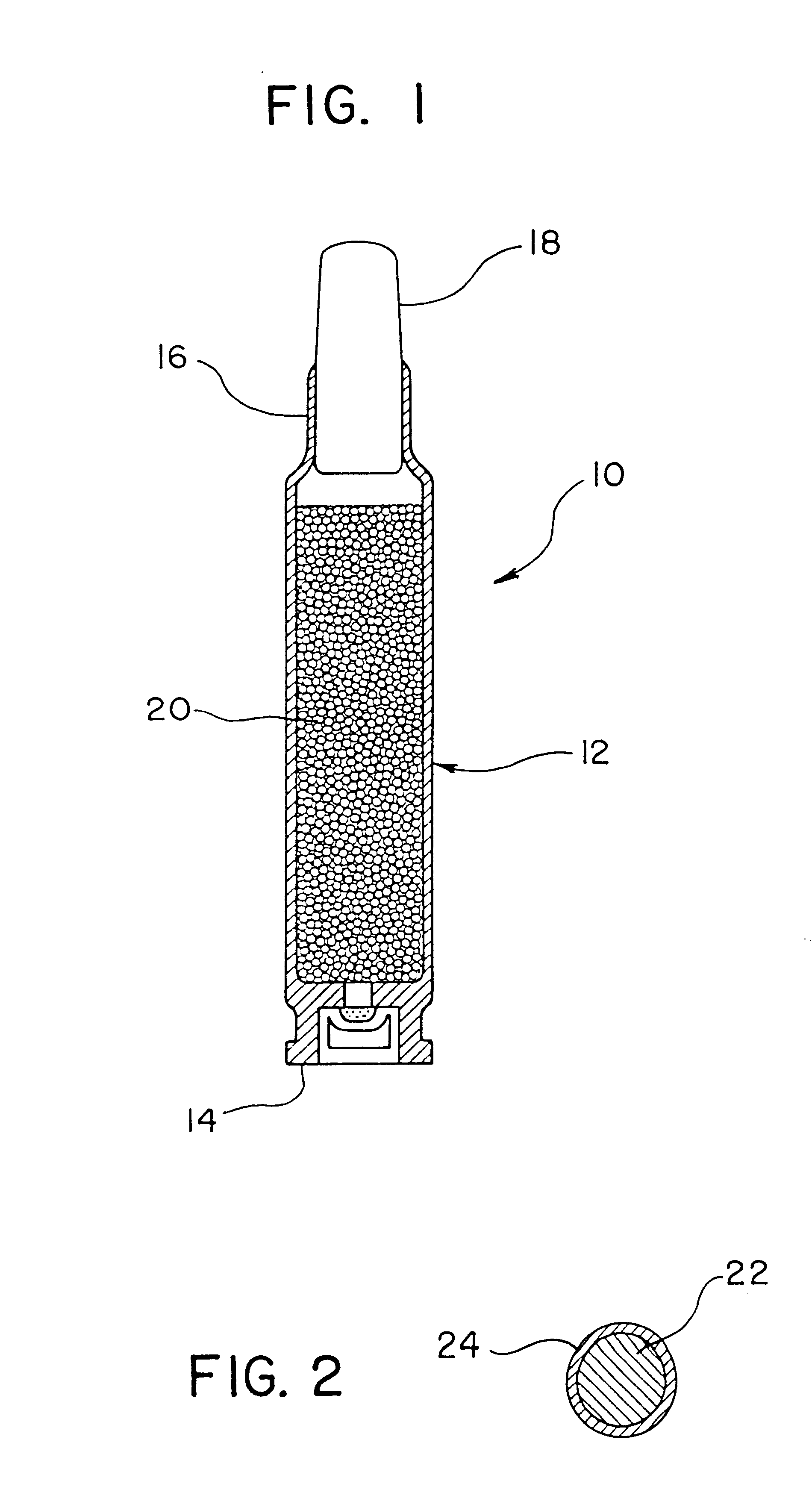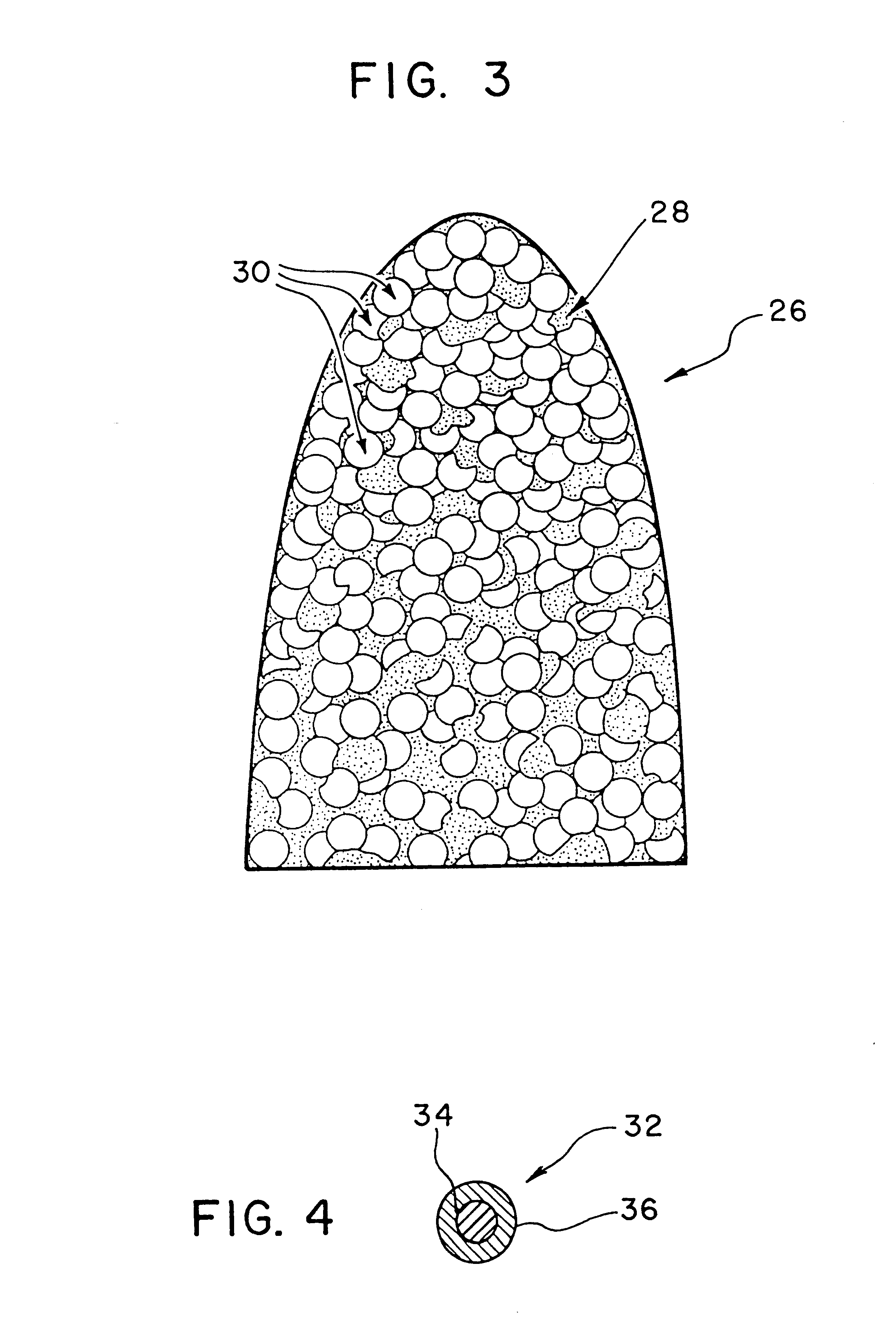Non-lead, environmentally safe projectiles and explosives containers
a technology of environmental protection and projectiles, applied in the direction of explosive charges, transportation and packaging, coatings, etc., can solve the problems of unintended collateral damage, health problems, environmental and safety problems of lead-containing bullets,
- Summary
- Abstract
- Description
- Claims
- Application Information
AI Technical Summary
Problems solved by technology
Method used
Image
Examples
example 2
Same as Example 1, except for tungsten carbide spheres, ball point pen balls, with a diameter of 0.051 inches (1.3 mm) were used. A 125 .mu.m (5 mil) thick aluminum coating was applied again using a CVD technique. Similar results were achieved as in Example 1.
example 3
Pellets or shot used in shotguns are made of non-lead materials and have densities to match or approximate lead or lead alloys currently available. The shot has a soft outer coating which overcomes the problem of steel shot abrading inner surfaces of gun barrels. The ability of this outer coating to deform, due to its inherent softness compared to steel, is what avoids barrel deformation and wear.
The properties of the shot are tailored for specific applications. For example, duck and geese hunters require shot with extended range and good penetration. A dense hard pellet would thus give optimum performance in this application. Target shooters, on the other hand, prefer light charges of smaller diameter lighter weight shot. This product could permit customized loads and result in improved performance as compared to currently available ammunition.
It is also possible to include variations in coating or plating of the particulates. More complex combinations of metals, such as ternary co...
example 4
A mixture of 30 wt. % 320 mesh tin and 70 wt. % 100 mesh tungsten powders was prepared by dry blending the as-received materials. A 9.6 g (148 grain) sample of blended powder was weighed and placed into the cavity of a cylindrical steel die with a diameter of 0.356 inches and placed under the ram of a hydraulic press. The powder sample was subjected to pressures ranging from 140 to 350 Mpa at room temperature. Once the chosen pressure was achieved, the pressure was held for about 5 seconds. The part was removed from the die and characterized.
Density was measured for samples pressed at 350 Mpa, the average density of the slugs was 11.45 g / cm.sup.3 or about 100% the theoretical density of lead. The room-temperature compressive strength of the W-Sn part was about 140 Mpa and the part exhibited almost ductile behavior.
In addition to the cylindrical specimens resembling double-ended wadcutter bullets, truncated cone projectiles of the same diameter and weight (0.356 inches and 148 grains...
PUM
| Property | Measurement | Unit |
|---|---|---|
| thickness | aaaaa | aaaaa |
| diameter | aaaaa | aaaaa |
| weight percent | aaaaa | aaaaa |
Abstract
Description
Claims
Application Information
 Login to View More
Login to View More - R&D
- Intellectual Property
- Life Sciences
- Materials
- Tech Scout
- Unparalleled Data Quality
- Higher Quality Content
- 60% Fewer Hallucinations
Browse by: Latest US Patents, China's latest patents, Technical Efficacy Thesaurus, Application Domain, Technology Topic, Popular Technical Reports.
© 2025 PatSnap. All rights reserved.Legal|Privacy policy|Modern Slavery Act Transparency Statement|Sitemap|About US| Contact US: help@patsnap.com



